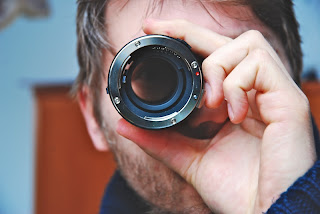A NEW WAY TO GAME! IS THE XBOX 360 KINECT THE RIGHT NEXT GADGET FOR YOU?
There are a plethora of game systems and games out there. Why should you consider the xBox 360 and the new Kinect? What will the Kinect do for you? Some have claimed it will change your life, will it do that? What games are available for the Kinect and do they really work well enough to justify the cost, the time, and the trouble? Is there enough variety to suit your needs?

Let's start with a little bit of history xBox 360 for you. If you will go way back in your mind and remember that the xBox 360 is a sixth generation video game by Microsoft. This group of games was known as the 128-bit era game consoles. The xBox was actually released November 2001. However, the xBox 360 is the second video game console produced by Microsoft (the first was the xBox). It now competes well with the Sony's PlayStation 3 and the Nintendo Wii, as part of the seventh generation of video game consoles, the xBox 360 was the first of that creative age introducing HD and 1080p into the game playing mix in November 2005.
The xBox 360 was officially unveiled on television. The announcement was on MTV in 2005. Coming up to more modern time the xBox 360 was known as the xBox 360 S, but now we just call it the xBox 360. The consoles have been redesigned, as well as the hardware, and that innovation was officially announced in June 2010. And word is that Microsoft has announced, covertly, that if they ever (and with their current popularity I'm sure they will) come out with another console as a successor to the xBox 360 S it will be simply called xBox 720. The initial rumors are very intriguing.
The second edition of the xBox 360, which included 4 GB of storage, was a prelude to the current box. The xBox 360 Elite came out middle of 2010. But with the avalanche of new games being designed and released it pressured Microsoft to upgrade their hardware.
Isn't that always the case with hardware and software? It goes like this: Software becomes more complicated and needs faster processors, larger computers and capacity. And so the hardware designers and manufacturers have to race to keep up. It's the same with the gaming genre. Try playing Halo Reach on your old xBox. It's not happening.
Thus in August of 2010 Microsoft announced that they had a mega model, a 250 GB stand-alone hard drive for use with the xBox 360 S models, and that would be priced initially at $129.99.
The features of each of these models and core systems are interesting, but it is beyond the scope of this review. The remarkable features, capabilities and the capacities of the devices improved with each progressive model. Microsoft became one of the big guns in the gaming console market and will remain there with this system.
This past Christmas buying season of 2010, the xBox 360 was bundled for better consumer purchasing power, which, among others, featured the Limited Edition, as well as some of the more popular games such as the Halo Reach, Call of Duty Black Ops, and other special features including wireless remotes controllers and head-sets.
The online service is called xBox Live. This is a worldwide service that allows users to play with and against other online players or download purchased content, experience new games and it also offers movies, game trailers, game demos that can be played for a short trial period encouraging the user to then go on to purchase the full game.
There are xBox Live arcade
games, images, dashboard themes as well. Through xBox Live, a person can discover new undiscovered content. There are Gold Memberships, which allows you to purchase Microsoft Points to use for downloads avatars and add-ons or additions to your current games. Those prepaid cards come in 400, 800, 1600, 4000, and 6000 point denominations for an equivalent amount of money.
I will reveal some interesting details about the negative attributes of the xBox and xBox 360. It may be a surprise to a newbie, thinking that there were not any negatives. But there are...or were.
It seems that the console can be subject to a number of technical problems. Users have reported concerns over its reliability and alarming failure rate in the older models. That led Microsoft to extend the xBox 360 S warranty to three years for hardware failure problems. Users were getting the dreaded red ring of death and a message announcing general hardware failure.
Microsoft unquestionably did not want to leave their customers hanging and helpless. It attempted to modify the consoles to improve its reliability. The unit was subsequently put together much better and inside the unit there is not as much movement in the main (mother) board during the heat expansion and now the unit has better ability to dissipate heat.
With the release of this redesigned xBox 360 the warranty on the newer models does not include the three year extended warranty for general hardware failure. The word from the experienced gaming community is that the xBox 360 is a very reliable machine and the user complaints and failures of the past have not surfaced.
The new xBox 360s are very reliable. Overall, I rate the xBox 360 5-Stars. It is now the standard in the current industry. They are the leader and the other companies are trying to keep up.




















